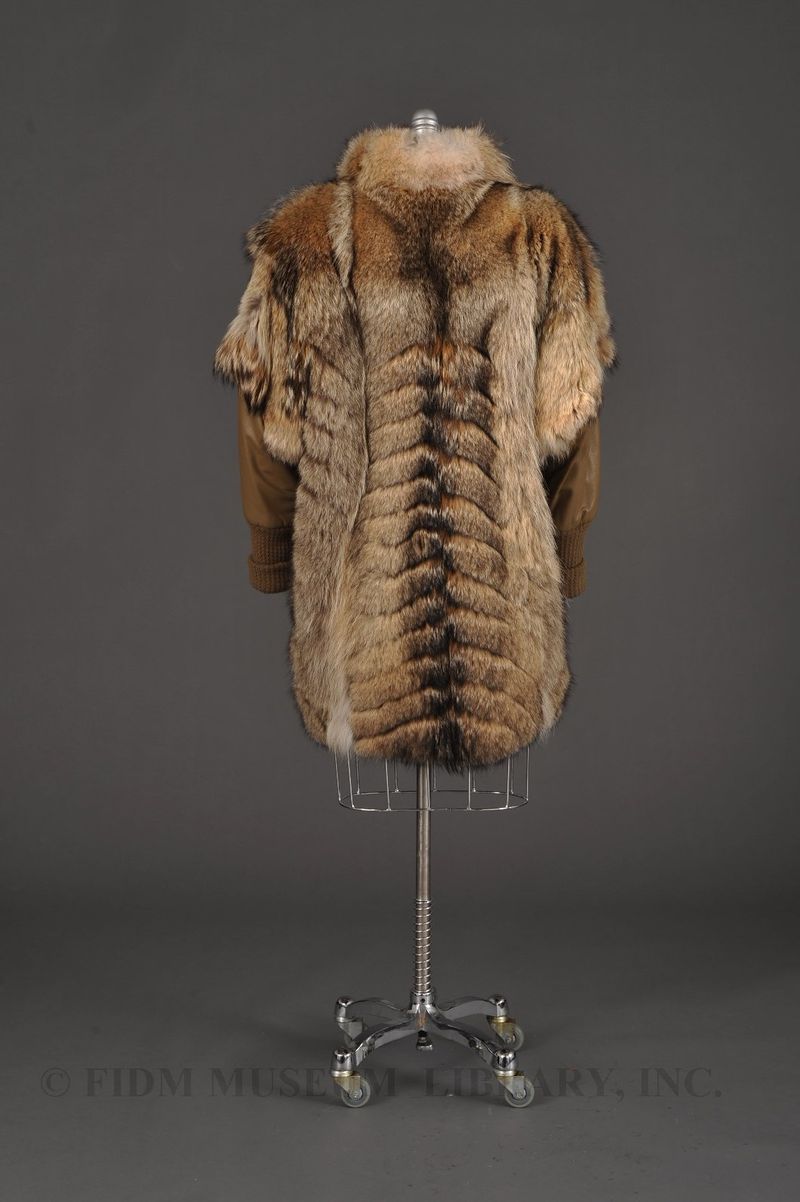Bill Cunningham's recent On The Street video "Fabulous, Mr. Fox," pointed out something I've noticed over the past few months: a renewed interest in animal prints and fur, both real and fake. In November 2010, the New York Times featured an article on fur coats made from nutria, a voracious rodent. Vogue's December 2010 editorial titled "On The Prowl" highlights a trend for "wildcat-print heels roam[ing] the urban jungle."1 And don't forget the Fall 2010 Chanel collection, which featured shaggy fake fur showcased against a frozen background, including chunks of an iceberg reportedly transported from Scandinavia.
Some have suggested that the renewed popularity of fur and animal prints can be directly tied to the prevalence of fast fashion. When fashion-forward styles and designer capsule collections can be bought inexpensively at mass-market retailers, those with the interest and financial resources purchase status items (fur, specific handbags) unavailable at lower price points. Thus, fur is driven into a niche market, reinforcing its status as a luxury item. Ironically, some mass-market retailers, including H&M and Forever 21, have stopped using fur and/or exotic leathers in their collections. Though made for ethical reasons, this decision further reinforces the idea of fur as a rare and desirable commodity.
 Knee-length fur coat
Knee-length fur coat
Ted Lapidus
Wolf/coyote/leather
c. 1983
Gift of Jo Holzman
2006.871.2
It would be unbalanced to discuss fur without discussing its detractors. Many powerful fashion world figures, including Stella McCartney, Donna Karan and Tim Gunn advocate against the use of fur in fashion. The anti-fur movement was particularly active in the 1980s and 1990s. PETA's iconic "I'd Rather Go Naked Than Wear Fur" campaign was launched in 1991 and has featured numerous celebrities who reject fur and sometimes leather. The so-called "fur wars" of the 1990s are often embodied by the image of an anti-fur activist throwing red paint on a fur coat. According to some reports, this probably happened rarely, if at all. However, anti-fur activists have reportedly slashed fur coats in-store and broken windows at fur retailers.2
This Ted Lapidus coat seems almost calculated to enrage an anti-fur activist. Oversized and extravagant in its usage of materials, this wolf and coyote fur coat embodies a conception of wealth and power often present in 1980s fashion. The placement of the fur pelts, slung over the shoulders, references the earliest fur and leather garments–unstructured skins protecting the body from the elements. Wearing the skin of a powerful animal is sometimes thought to transfer the characteristics of that animal to the wearer. In this case, the coat embodies the scrappy fierceness and threatening power associated with both wolves and coyotes: it literally becomes a power suit.
Historically, wolf and coyote fur was considered less desirable than mink, ermine or fox. This was due both to widely held perceptions about these creatures and the inherent quality of their fur. By using these particular furs in his coat, Lapidus transforms them into into a rare commodity. The coat becomes an example of poverty de luxe, a frequently recurring theme in fashion history.
Readers, where do you stand on fur? Does your winter wardrobe consist of fur coats and hats? Do you consciously avoid fur? What about fake fur?
1 "Talking Fashion: On The Prowl." Vogue Dec 2010: 156.
2 Kasindorf, Jeanie. "The Fur Flies: The Cold War Over Animal Rights." New York Jan 15, 1990: 28.



I’ll wear the skin of anything I’m willing to eat — and I’ll also wear vintage furs and fake fur.
I’m not going to encourage the farming of animals like mink, that have scant use outside of their pelts — if you’re going to kill, you should use every part of what you’ve killed.
It’s such a personal decision, isn’t it? I tend to stay away from fur, but I wear leather and eat meat. I have worn vintage fur as a trim, and have definitely worn fake. I do agree with you about using the whole animal.